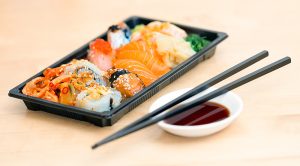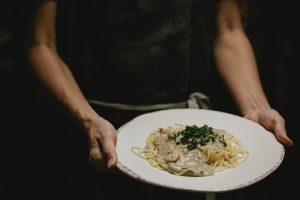Fusion cuisine has exploded in popularity in recent years, with more and more restaurants incorporating diverse cultural elements to create unique and innovative dishes. These fusion restaurants reflect the diverse cultural landscape of our world today and offer a tantalizing glimpse into the endless possibilities of culinary hybridization. From Asian Fusion to Latin Fusion to Mediterranean Fusion, fusion cuisine is vast and multifaceted. It involves blending traditional ingredients and techniques from different culinary traditions to create something new and exciting. However, running a fusion restaurant also presents unique challenges, such as balancing authenticity with creativity, finding the right balance of flavors and textures, and appealing to diverse tastes and preferences. Despite these challenges, the popularity of fusion cuisine shows no signs of slowing down, and we can’t wait to see what delicious and inventive dishes will emerge from the ever-evolving world of fusion restaurants. Join us on this culinary journey as we discover the exciting and ever-evolving world of fusion fare.

What are the Factors Influencing Fusion Cuisine?
Several factors influence the development of fusion cuisine. These factors can include:
Migration Patterns and cultural exchange
Migration patterns have impacted culinary traditions worldwide, leading to the birth of fusion restaurants which have become increasingly popular in recent years. With people relocating from different regions and countries, the blending of cultural cuisines has become inevitable, leading to the creation of exciting new flavors. Fusion restaurants have become a platform for chefs to experiment by combining different ingredients from various cultures, creating a unique culinary experience for their customers. The cultural exchange of culinary traditions has not only brought excitement to the food industry. Still, it is also a testament to the richness of diversity and the importance of sharing cultural experiences.
Accessibility of ingredients and technology
The accessibility of ingredients and technology has revolutionized the culinary world, particularly when it comes to fusion cuisine. Thanks to global trade and transportation, chefs can access various ingredients worldwide. Experimenting with these new ingredients and techniques has become a trend among chefs, creating fusion cuisine. Globalization, travel, social media, and cultural exchange significantly shape the fusion cuisine we enjoy today. With so many ingredients and technological advancements, the possibilities for creating unique and exciting dishes seem endless.
Market demand and changing taste preferences
The demand for new and exciting flavors is rapidly changing the restaurant industry. With consumers becoming more adventurous in their taste preferences, chefs are pressured to create more unique dishes. As a result, fusion cuisine has become increasingly popular as chefs fuse various cultures’ culinary traditions to create one-of-a-kind menu items. Factors such as globalization, immigration, and technological advancements have all influenced the rise of fusion cuisine. Today, diners can enjoy dishes that blend ingredients and cooking techniques from multiple regions of the world. The result is unparalleled flavors that delight even the most discerning food.
Historical and political factors
The art of fusion cuisine is not only shaped by the creativity of chefs but also by historical and political factors. One such factor is the different culinary traditions that are brought together due to colonization. This blending of flavors and techniques has given rise to some of the most complex and flavorful fusion dishes. Additionally, the influence of empires and their cuisine has significantly shaped the fusion cuisine we know today. From Spanish explorers in Latin America to British rule in India, the dishes that emerged from these historical events continue to inspire chefs to create new and exciting fusion dishes. In essence, it is the combination of various cultural and historical factors that contribute to the evolution and innovation of fusion cuisine.
What are the Types of Fusion Cuisine?
There are many types of fusion cuisine, each with its unique blend of flavors and techniques. Here are some of the most popular types of fusion cuisine:
 Asian Fusion
Asian Fusion
Asian fusion cuisine combines flavors and techniques from different parts of Asia, such as China, Japan, Korea, and Thailand. This fusion cuisine often blends sweet, spicy, and savory flavors and may incorporate soy sauce, ginger, and sesame oil ingredients.
 Latin Fusion
Latin Fusion
Latin fusion cuisine blends traditional Latin American flavors with other culinary traditions, such as Spanish, Italian, and French. This fusion cuisine often incorporates ingredients such as chili peppers, cilantro, and lime and may include dishes such as ceviche, empanadas, and paella.
 Mediterranean Fusion
Mediterranean Fusion
Mediterranean fusion cuisine combines the flavors and techniques of the Mediterranean region with other culinary traditions, such as Asian or Latin. This fusion cuisine often includes olive oil, garlic, and tomatoes and may include falafel, hummus, and kebabs.
 Other regional fusions
Other regional fusions
Many other regional fusions incorporate culinary traditions, such as Caribbean, Hawaiian, and African fusion. These types of fusion cuisine often incorporate local ingredients and flavors, creating a unique blend of culinary traditions.
Challenges of Running a Fusion Restaurant
Running a fusion restaurant can be challenging, balancing the authenticity of different culinary traditions and incorporating new and innovative flavors and techniques. Here are some of the main challenges of running a fusion restaurant:
- Maintaining authenticity while incorporating fusion elements: Fusion cuisine involves blending two or more culinary traditions, which can be a delicate balance. Chefs must ensure that their dishes are still authentic to the original culinary tradition while incorporating new and innovative elements.
- Balancing flavors and textures in fusion dishes: Fusion cuisine often involves blending different flavors and textures, which can be challenging. Chefs must ensure that the flavors and textures complement each other rather than clash.
- Educating customers about unfamiliar ingredients and flavors: Fusion cuisine often incorporates ingredients and flavors that may be unfamiliar to customers. Chefs must take the time to educate their customers about these ingredients and flavors so that they can appreciate the dishes they are being served.
- Managing costs: Fusion cuisine often involves incorporating a wide range of ingredients and techniques, which can be expensive. Chefs must carefully manage their costs to ensure that they can create exciting and innovative dishes without breaking the bank.
- Keeping up with changing tastes and trends: The culinary landscape is constantly evolving, and chefs must keep up with changing tastes and trends to ensure that their fusion restaurant remains relevant and successful.
In conclusion, fusion cuisine has emerged as a fascinating culinary trend in recent years, blending different culinary traditions to create unique and innovative dishes. From Asian Fusion to Latin Fusion to Mediterranean Fusion, fusion cuisine has a wide range of flavors and techniques that reflect the diverse cultural landscape of our world today. Running a fusion restaurant presents many challenges, including balancing authenticity with innovation, managing costs, and keeping up with changing tastes and trends. However, with the right balance of creativity, authenticity, and business savvy, fusion restaurants can offer customers a tantalizing glimpse into the possibilities of culinary hybridization. As the culinary landscape continues to evolve, we can expect to see even more exciting and innovative fusion cuisine in the years to come.

